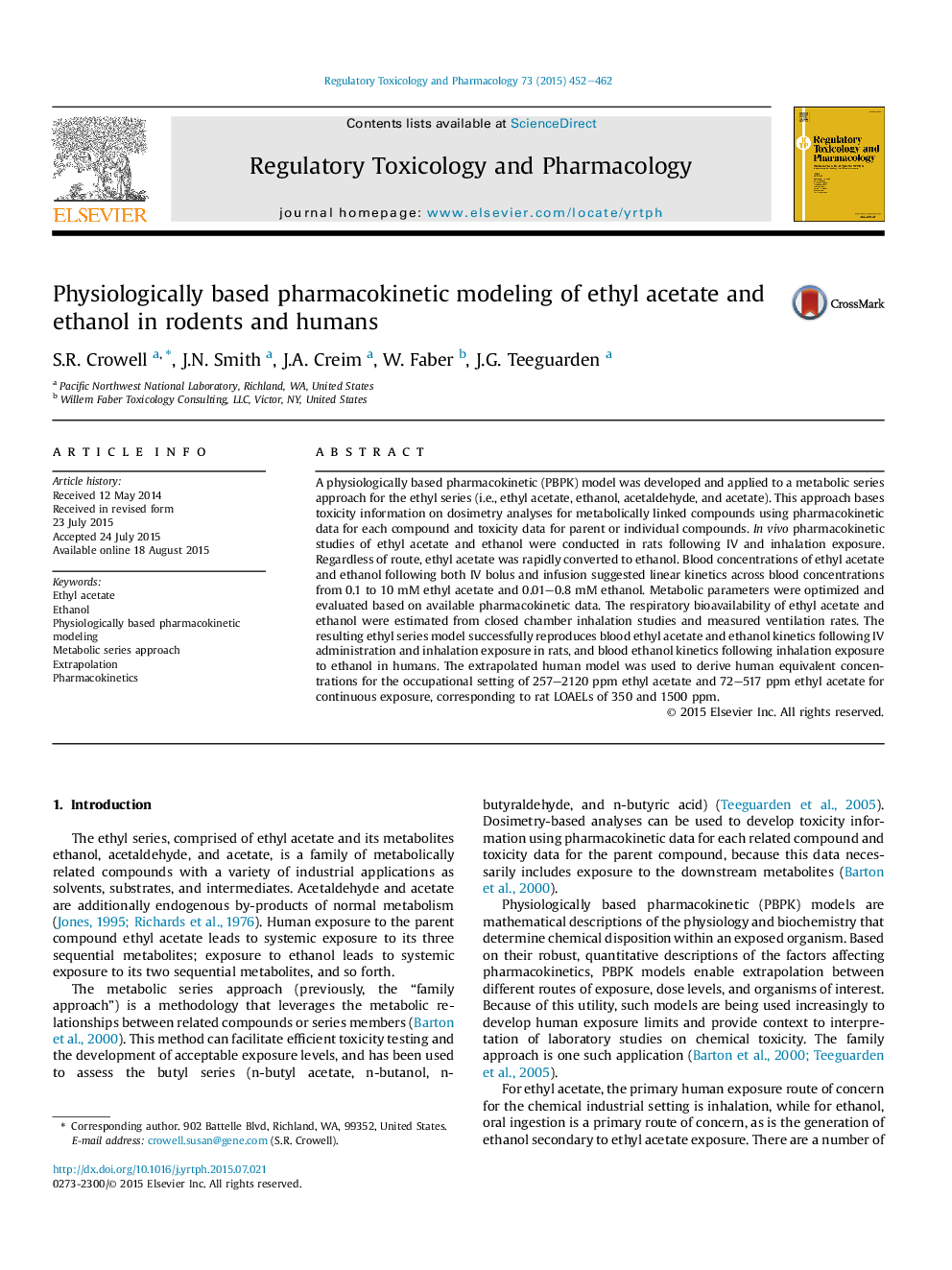| کد مقاله | کد نشریه | سال انتشار | مقاله انگلیسی | نسخه تمام متن |
|---|---|---|---|---|
| 5856372 | 1131973 | 2015 | 11 صفحه PDF | دانلود رایگان |
- Rat pharmacokinetics of ethyl acetate and ethanol following bolus and i.v. infusion.
- PBPK model for the ethyl acetate and ethanol confirms structure for acetate ester models.
- Coordinated in vitro and in vivo experiments in rats for calibrating model parameters.
- Human equivalent concentrations of ethyl acetate calculated for occupational and continuous exposures.
A physiologically based pharmacokinetic (PBPK) model was developed and applied to a metabolic series approach for the ethyl series (i.e., ethyl acetate, ethanol, acetaldehyde, and acetate). This approach bases toxicity information on dosimetry analyses for metabolically linked compounds using pharmacokinetic data for each compound and toxicity data for parent or individual compounds. In vivo pharmacokinetic studies of ethyl acetate and ethanol were conducted in rats following IV and inhalation exposure. Regardless of route, ethyl acetate was rapidly converted to ethanol. Blood concentrations of ethyl acetate and ethanol following both IV bolus and infusion suggested linear kinetics across blood concentrations from 0.1 to 10 mM ethyl acetate and 0.01-0.8 mM ethanol. Metabolic parameters were optimized and evaluated based on available pharmacokinetic data. The respiratory bioavailability of ethyl acetate and ethanol were estimated from closed chamber inhalation studies and measured ventilation rates. The resulting ethyl series model successfully reproduces blood ethyl acetate and ethanol kinetics following IV administration and inhalation exposure in rats, and blood ethanol kinetics following inhalation exposure to ethanol in humans. The extrapolated human model was used to derive human equivalent concentrations for the occupational setting of 257-2120 ppm ethyl acetate and 72-517 ppm ethyl acetate for continuous exposure, corresponding to rat LOAELs of 350 and 1500 ppm.
Journal: Regulatory Toxicology and Pharmacology - Volume 73, Issue 1, October 2015, Pages 452-462
